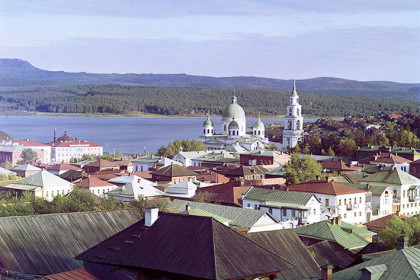
Sergej Prokudin was born in 1863 and studied chemistry with Dmitrji Mendeleev (the inventor of the Periodic Table, to be clear); when the latter one founded a photograph society, the young Prokudin became fond of photography and in the late nineteenth century, exploiting his studies, became in fact one of the pioneers of color photography.
Following the studies and the theories about “additive coloration” of James Clerk Maxwell and the experiences acquired in Berlin at the “court” of the most important researcher in photochemistry and color photography of the time, Adolf Miethe, he developed a very special system to achieve pictures with vivid and bright colors: a self-built machine, following the model invented by Miethem, realized three shots in rapid succession on rectangular plate of 10×30 cm for a black and white negative, filtering each shot in a different color (blue, green, red), after development, through a tri-camera enlarger, he projected images filtered again in the three colors and perfectly overlapping, the image composed like that and reflected by a translucent support was in colors.
If we think of the historical period and context, the result was at least explosive and its scope came up to the private rooms of Tsar Nicholas II who, thrilled with “scientific” results of the beauty of the images and color brightness «obtained without the intervention of a painter», as a newspaper of the time said, granted Prokudin to realize his project “Splendors of Russia”.
The Tsar gave Sergei the chance to carry out his project not only from the bureaucratic point of view – giving him all travel permits necessary and delivering him a letter penned in his own hand in which he invited all the administrators of the various regions to work diligently with the photographer – and making also available a special railway car equipped with everything needed to run its special darkroom, a boat and a motor vehicle for moving over rough ground.
In 1909 begins Prokudin’s documentary adventure, which at regular intervals lasted until 1917, when the Bolsheviks put an end to both Prokudin’s ambitious project that, much more bloodily, to the great empire and the Tsar.
All Prokudin’s images and the ones from his project are visible on the site of the Library of the Congress of United States.
 English
English  Italiano
Italiano 



